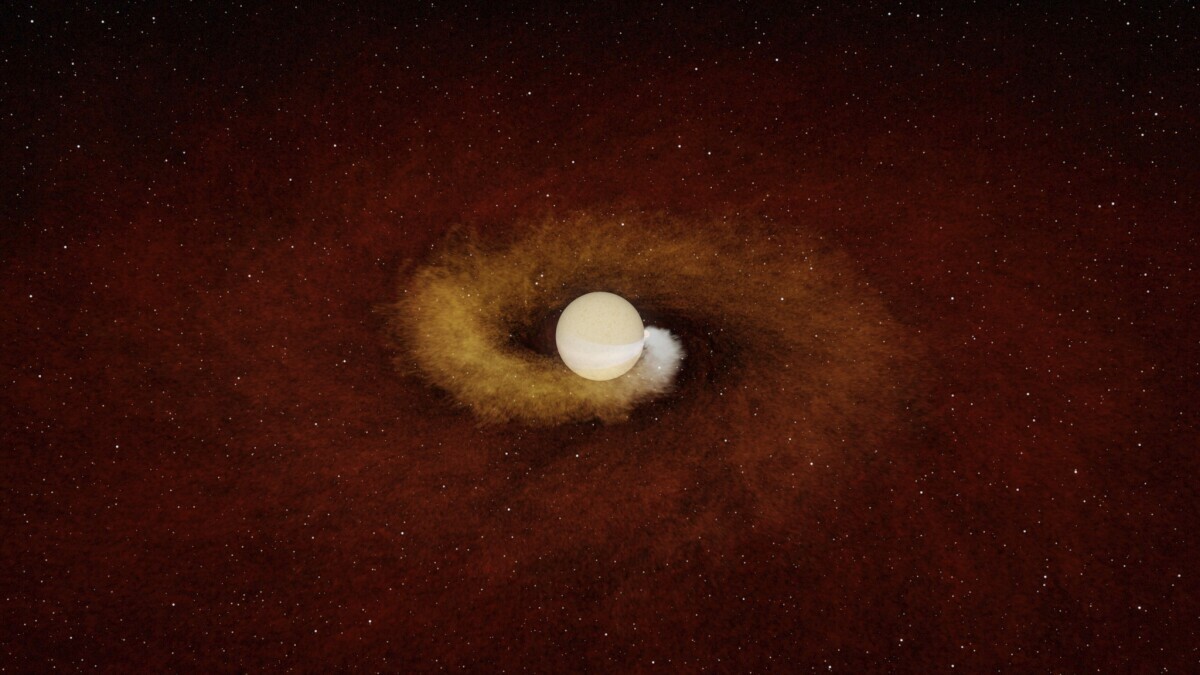Notifications
ALL BUSINESS
COMIDA
DIRECTORIES
ENTERTAINMENT
FINER THINGS
HEALTH
MARKETPLACE
MEMBER's ONLY
MONEY MATTER$
MOTIVATIONAL
NEWS & WEATHER
TECHNOLOGIA
TV NETWORKS
VIDEOS
VOTE USA 2026/2028
INVESTOR RELATIONS
DEV FOR 2025 / 2026
ALL BUSINESS
COMIDA
DIRECTORIES
ENTERTAINMENT
FINER THINGS
HEALTH
MARKETPLACE
MEMBER's ONLY
MONEY MATTER$
MOTIVATIONAL
NEWS & WEATHER
TECHNOLOGIA
TV NETWORKS
VIDEOS
VOTE USA 2026/2028
INVESTOR RELATIONS
DEV FOR 2025 / 2026
About Me
 Latinos Media
Latinos Media Latinos Media provides all types of news feeds on a daily basis to our Members
Posted by - Latinos Media -
on - May 4, 2023 -
Filed in - News -
-
547 Views - 0 Comments - 0 Likes - 0 Reviews

 This artist’s impression shows a doomed planet skimming the surface of its star. Astronomers used a combination of telescopes to spot the first direct evidence of an aging, bloated sun-like star, like the one pictured here, engulfing its planet. These telescopes included the Zwicky Transient Facility (ZTF) at Caltech’s Palomar Observatory, the W.M. Keck Observatory, and NASA’s NEOWISE mission. (K. Miller/R. Hurt (Caltech/IPAC)) K. Miller/R. Hurt (Caltech/IPAC) Researchers capture star engulfing dying planet for first time ever Brady Knox May 03, 05:39 PMMay 03, 05:39 PM Video Embed
This artist’s impression shows a doomed planet skimming the surface of its star. Astronomers used a combination of telescopes to spot the first direct evidence of an aging, bloated sun-like star, like the one pictured here, engulfing its planet. These telescopes included the Zwicky Transient Facility (ZTF) at Caltech’s Palomar Observatory, the W.M. Keck Observatory, and NASA’s NEOWISE mission. (K. Miller/R. Hurt (Caltech/IPAC)) K. Miller/R. Hurt (Caltech/IPAC) Researchers capture star engulfing dying planet for first time ever Brady Knox May 03, 05:39 PMMay 03, 05:39 PM Video Embed
A team of researchers found the first direct case of a star engulfing a planet, publishing their findings on Wednesday.
A research team from the Massachusetts Institute of Technology, Harvard University, and the California Institute of Technology published their research in a paper published in Nature titled "An infrared transient from a star engulfing a planet." In it, the team relayed their discovery of a sunlike star reaching its "red giant" phase, ballooning big enough to swallow an orbiting planet.
DISCOVERY OF STRANGE ASTEROID PROPERTIES UPENDS PREVIOUS ASSUMPTIONS ABOUT COMETS


Over the course of the week following the devouring of the star, it grew in size and became over 100 times brighter before shrinking back to its normal size.
The finding is being hailed as giving valuable insight into how Earth could meet its eventual demise nearly 4 billion years from now.
“For decades, we’ve been able to see the before and after,” lead author Kishalay De said in a statement. “Before, when the planets are still orbiting very close to their star, and after, when a planet has already been engulfed, and the star is giant. What we were missing was catching the star in the act, where you have a planet undergoing this fate in real-time. That’s what makes this discovery really exciting.”
The catch was also remarkable due to how rare it is.
"We know that this must happen to all planets that are orbiting at distances smaller than that of the Earth but it was considered extremely challenging to provide experimental evidence for this," De, an astrophysicist at MIT, told Space.com.
CLICK HERE TO READ MORE FROM THE WASHINGTON EXAMINER
"Honestly, one of the biggest surprises for me was that we found it in the first place," he continued. "Planetary engulfment has been a fundamental prediction in our understanding of stars and planets, but their frequency have been very uncertain. So finding a potentially rare event for the first time is always exciting."

The location of the phenomenon is within our own Milky Way galaxy but about 12,000 light-years away. The planet consumed by the star, which spiraled close to the star for an extended period of time, was believed to be a gaseous planet about the size of Jupiter.
\u00a9 2023 Washington Examiner